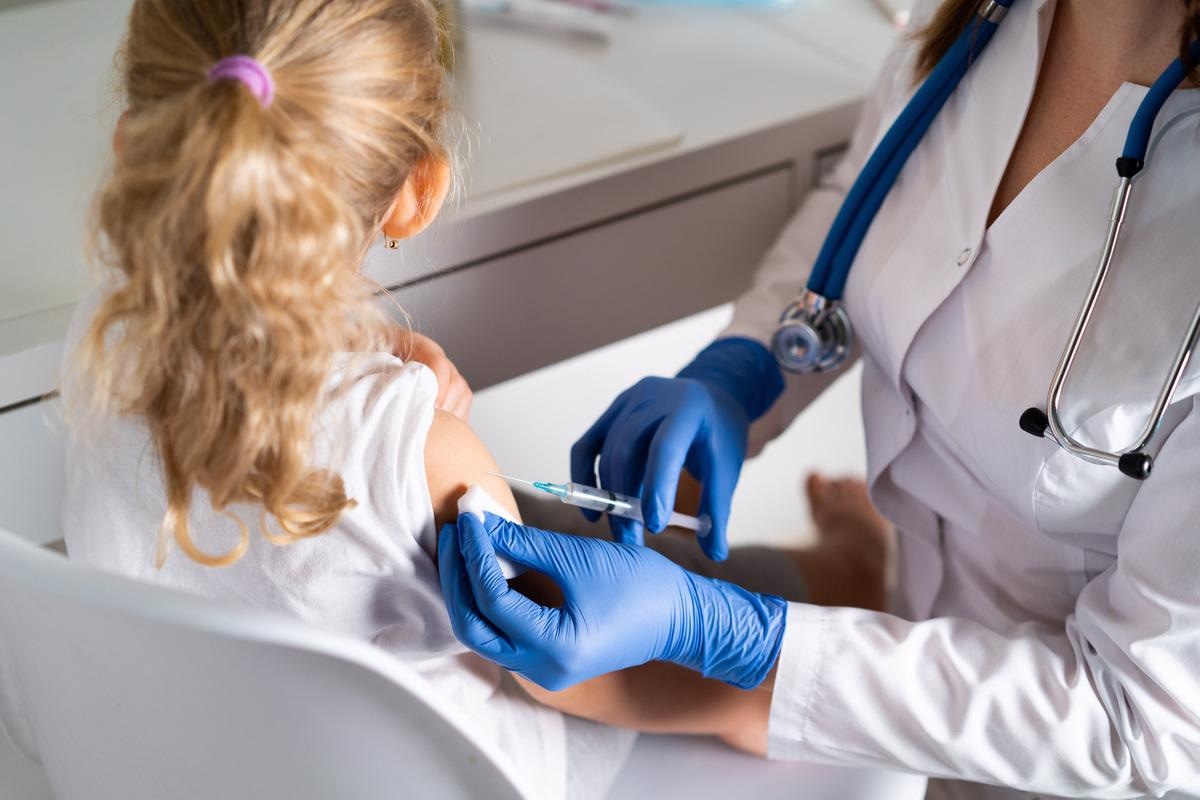 By Neha MathurReviewed by Danielle Ellis, B.Sc.May 13 2022
By Neha MathurReviewed by Danielle Ellis, B.Sc.May 13 2022In a recent study published in The New England Journal of Medicine, researchers evaluated the safety, immunogenicity, and efficacy of the messenger ribonucleic acid (mRNA)-1273 vaccine in children.
 Study: Evaluation of mRNA-1273 Covid-19 Vaccine in Children 6 to 11 Years of Age. Image Credit: Uryupina Nadezhda/Shutterstock
Study: Evaluation of mRNA-1273 Covid-19 Vaccine in Children 6 to 11 Years of Age. Image Credit: Uryupina Nadezhda/Shutterstock
Background
Like adults, coronavirus disease 2019 (COVID-19) has disrupted the lives of children, affecting their academic life and overall well-being. Moreover, severe acute respiratory syndrome coronavirus 2 (SARS-CoV-2) infection can cause a multisystem inflammatory syndrome in children (MIS-C), necessitating protection via vaccination. Subsequently, the US Food and Drug Administration (FDA) recently issued provisional emergency use authorization (EUA) for the mRNA-1273 vaccine for children in countries outside the US.
About the study
The current phase II-III clinical trial study, termed the KIDCove trial, was completed in two parts. Part one of the trial was open-label for dose selection, while part two was a blinded, placebo trial evaluating the expansion of the selected dose.
Based on the safety and immunogenicity results of part 1 of the trial, researchers selected the 50-μg dosage level for part 2. Next, they randomly assigned 4016 eligible children in a ratio of 3:1 using a centralized interactive response technology system. These children received two doses of mRNA-1273 vaccine or placebo of 50 μg each at an interval of 28 days. The team then followed for 82 days on average after the first injection.
There were three age-based cohorts of the children participating in the trial - 6 months to 23 months, two to five years, and six to 11 years. These children were enrolled at 79 sites in the US and eight sites in Canada. Since the study population was so diverse, the results of this large trial could be generalized to various populations of children.
The researchers generated the safety profile of the mRNA1273 vaccine in children compared to young adults participating in a related phase III clinical trial. More specifically, they ascertained that the elicited immune response in children was comparable to adults and not inferior.
Study findings
The authors noted only low-grade, transient adverse events in 4016 children who received a 50-μg dose. These adverse events commonly included injection-site pain, headache, and fatigue. By the cut-off date of the present trial, the authors observed no vaccine-related serious adverse events in children. There were no signs of MIS-C, myocarditis, or pericarditis.
Compared to young adults who received a 100-μg dosage of the mRNA-1273 vaccine, children receiving a 50-μg dosage had higher neutralizing antibody (nAb) titers. The nAB titers in children vs. young adults were 1610 and 1300, respectively, post one month of receiving the second dose, i.e., day 57. Moreover, the magnitude of the geometric mean titer (GMT) of nAbs at day 57 well correlated with a 69% reduced COVID-19 risk in the COVE trial. Additionally, 99% of both age group participants showed serologic responses, pointing to the success of the pre-specified non-inferiority criterion.
It is noteworthy that against any incidence of COVID-19 within 14 days post first vaccine dose, first injection, the vaccine efficacy was 88.0%, according to the Centers for Disease Control and Prevention (CDC) definition. This study observation corresponds to the time when SARS-CoV-2 Delta (B.1.617.2) variant was dominant in the US.
Conclusions
The present study presented the interim results of the ongoing KidCOVE trial. The findings demonstrated that a 50-μg dose level of the mRNA-1273 vaccine provided a protective benefit in children aged six to 11 years against SARS-CoV-2 and its variants beginning 14 days after the first injection. Additionally, it had an acceptable safety profile and high efficacy.
Journal reference:
- Evaluation of mRNA-1273 Covid-19 Vaccine in Children 6 to 11 Years of Age, C. Buddy Creech, Evan Anderson, Vladimir Berthaud, Inci Yildirim, Andrew M. Atz, Ivan Melendez Baez, Daniel Finkelstein, Paul Pickrell, Judith Kirstein, Clifford Yut, Ronald Blair, Robert A. Clifford, et al.. The New England Journal of Medicine. doi: 10.1056/NEJMoa2203315 https://www.nejm.org/doi/full/10.1056/NEJMoa2203315